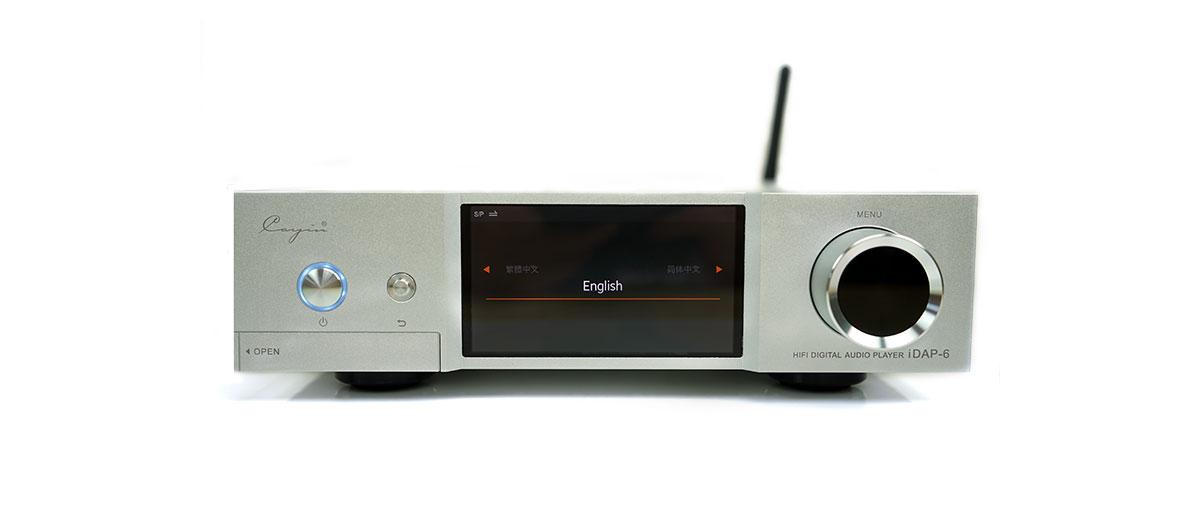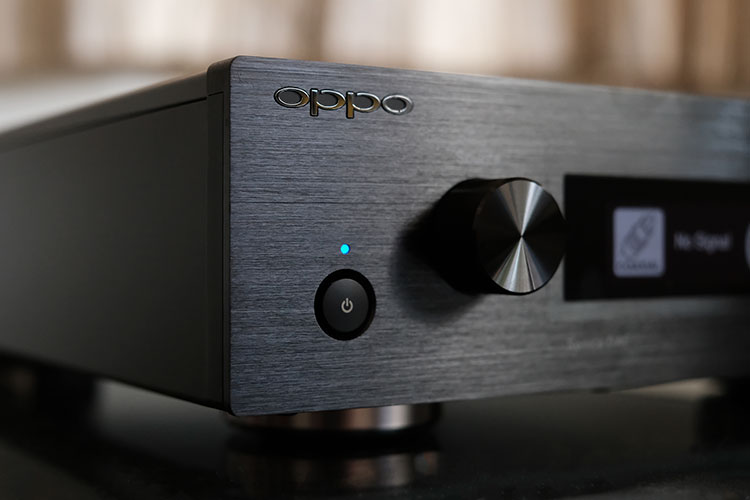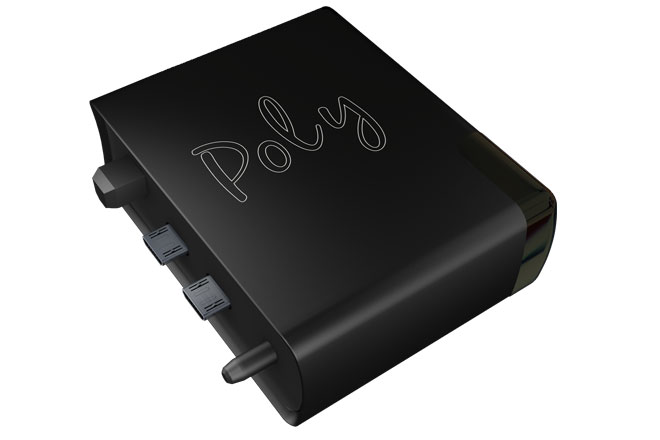Sound Impressions
Considering the iDAP-6 is a digital transport and not a DAC, defining its sound qualities is going to be contextual to whatever source you choose to use and over what medium you receive your audio.
Bluetooth is lossy, so you will not get quite the level of detail as a WiFi network streaming setup. Even then, wireless won’t quite have the same clarity and micro-detail as a wired USB delivery.
The absolute best setup is the OTG to iDAP-6, as it is purely local with a direct delivery free of potential jitter and issues from other sources.
Using a laptop setup with 44.1k 16BIT FLAC files via FooBar and a USB connection to the iDAC-6 as a direct comparison to an OTG setup on the IDAP-6 optical and coaxial inputs into the iDAC-6, I could detect some subtle differences.
However, these were marginal and not something huge. If anything, the difference between coaxial and optical inputs on the iDAP-6 provided for a little more distinction.
iDAP-6 USB to iDAC-6 vs PC USB to IDAC-6
Using the USB connection from the PC directly to the iDAC-6 DAC, I got my usual presentation, which errs slightly to the musical side with a planted low end, good vocal emphasis, and an energetic but clean and refined top end.
This I am familiar with. It has a nice punchy tonality with a richer, more fun signature than pretty much most of the Sabre DACs, if not quite as revealing.
Switching to the iDAP-6 using local files (OTG) and USB to the iDAC-6, and again, the difference is nuanced in terms of presentation. The iDAP-6 tended to just deliver a little more “pop” than the PC/USB to the iDAC-6 route.
It still has relatively the same level of bass warmth and texture as the computer to DAC-6 connection, but now the upper mids have a bit more presence and space. Vocals are a touch cleaner via the IDAP-6 and not as rounded-sounding. The lower treble has a touch more sparkle and energy, also.
iDAP-6 Optical to iDAC-6
Switching to the optical input using the iDAP-6, I felt the presentation was marginally a bit cleaner with more mids focus and a touch more energy in the upper mids and lower treble. The low-end response was tight but lacked a little weight compared to the USB to iDAC-6 and the iDAP-6 USB to iDAC-6 signature.
iDAP-6 Coaxial to iDAC-6
I much preferred the coaxial input of the iDAP-6, which brought back a fuller low-end, more consistent with the USB to iDAC-6 presentation. That upper mids and lower treble focus the optical setup delivers is also toned down just a little, and back comes that richer timbre I am familiar with.
Select Comparisons
Oppo Sonica DAC
The Sonica DAC from Oppo, from a consumer point of view, is the best value DAC and streaming device out there currently. I say consumer because there are some design choices in the Sonica to get down to the $899 price point that the iDAP-6 has chosen not to follow.
All-in-One
The most important is the product positioning. The Sonica is a streamer and a DAC rolled into one, whereas the iDAP-6 is purely a digital transport that you can connect to any DAC.
This gives the iDAP-6 more flexibility if you happen to own a DAC already or are not fussed on the Sabre sound of the Sonica. You cannot divide the digital transport service of the Sonica out to another DAC.
Of course, you can connect the iDAP-6 to a Sonica DAC, which is a great combo, but the level of duplication streaming is not worth it.
The Sonica will appeal to those who want an out-of-the-box solution to connect to an amp and do not want to spend huge amounts. The iDAP-6 is for those with existing setups, both high-end and low-end.
Power Supply
The next most important for me is the use of a switching power supply in the Sonica DAC compared to the linear power supply of the iDAP-6. Not just the iDAP-6 but also the iDAC-6 and iHA-6.
If you happen to have all 3 components, then you have a very quiet setup. With the Sonica’s switching supply, it may be prone to a bit more high-frequency noise than the iDAP-6’s better-performing toroidal transformer.
Remote Control
It depends on what you have around the house in terms of which has the advantage, as neither comes with a physical remote control. At the time of the Sonica DAC review, we lamented this lack of an obvious feature, and now Oppo can sell you one for an additional $10 at their online checkout.
With Cayin, the iDAP-6 can be used via HiByLink and other BT remote control protocol compliant devices such as FiiO’s RM1.
HiByLink makes the most sense if you are using BT as the digital transport, but if you are on WiFi, you can also switch on the BT of the iDAP-6 and use the RM1 for some control features.
Streaming Features
With the Sonica DAP, you also have a wide range of streaming options, including WiFi and Bluetooth. If the Cayin iDAP-6 shows up on UPnP servers on desktops and smartphones, so will also the Sonica DAC. Here, I see no difference except in two key areas.
Manual SSID
The first is the lack of manual SSID input on the iDAP-6 and supporting App, which Sonica can do. You do not even have to touch the Sonica setup other than to activate the WiFi and let the app guide you through the linking process.
With the iDAP-6, it’s more old school with the physical dial having to go back and forth on an onscreen keyboard. Even then, it can only work with networks you can see. Anything hidden or requiring a bit of manual tweaking is out. It is a bit at odds with the modern open vision of what the iDAP-6 is supposed to be about.
Bluetooth Quality
The second round goes to the Cayin iDAP-6 with its High-quality option on the BT duplex protocol. The Oppo Sonica lacks aptX as well as duplex features as integrated as the iDAP-6.
In fact, it transmits regular BT 4.1 only and at a slightly shorter range than the iDAP-6. BT performance on the iDAP-6 is better, cleaner, and more detailed as a result.
Sound
That is a tough one because whilst the Sonica sound is relatively fixed with the onboard DAC, the Cayin iDAP-6 is not because it can be stacked on any DAC, including the Sonica. With the Sonica, though, you get a beautifully transparent and neutral sound signature free of the traditional Sabre glare.
Tonally, it is refined with a very balanced sound. That means linear bass, neutral mids, and a fairly neutral top-end that is a bit smoother than the old 9018 chipsets.
With the iDAP-6, well, you can get that also if connected to the Sonica DAC, but you can also switch up to the iDAC-6 signature and get something a bit more musical with more low-end warmth and bass impact.
You can also get a more forward vocal delivery and plenty of lower treble snap with the iDAC-6 combo. Is it as detailed? In that combo, not quite as detailed, but if you are rocking a Schiit Gumby or Yggdrasil RTR DAC, you are in a whole new ball game, leaving the Sonica well behind.
Chord Poly (using Mojo)
I am only going to give you some initial highlights here because we just received the Poly a few weeks ago and as not yet had enough time to give it a thorough evaluation.
Portable vs Desktop
Like the iDAP-6, it is also a streaming device with both Bluetooth and wireless capability as well as being able to hook up to a DAC/Amp, the Mojo. However, the Poly is really much more focused on portable streaming of digital audio and is completely dependent on the Mojo to function.
Mojo Fixed
In some ways, it is more akin to the Sonica DAC with its fixed DAC solution (Mojo) only slimmed right down to a portable setup. It cannot output a purely digital wired stream to any other DAC, it is purely for use with the Mojo.
GoFigure App
The Poly does have a configurable Android/iOS app to get everything set up, which is something I would love for the iDAP-6.
You can also manually enter your SSID and password via the Poly’s wifi hotspot to allow it to migrate over to your main network, which I find quite useful. The iDAP-6 is missing manual SSID configuration, which is a big thing for me.
Micro-SD Only
OTG or local file options are much more limited on the Poly. There is only room for a single micro-SD slot. The iDAP-6 can power HDDs up to 2TB front and rear 2 x flash sticks.
The Poly MPD server services can hook up to DLAN/UPnP services, much like the iDAP-6, if using a shared network. From here, you can access the Poly micro SD card files using your UPnP of choice.
Sound
Again, a tricky one to compare, but if anything,g the iDAP-6/IDAC-6 combo will be in a similar ballpark for tonality as the petite Mojo, only with a bit more power if matched to the right amp.
That means a slight bias to a more musical approach with a bit more low-end weight than, say, the Sonica or the Hugo 2, which are far more neutral/natural in their delivery.
I won’t go any further than that as I need to spend more time with the Poly and measure it again, the Mojo without the Poly in a wired solution, but suffice it to say, the iDAP-6 is a much more flexible solution for desktops and headphones than the more IEM/headphone orientated Mojo.
My Verdict
The iDAP-6 is a quality-built product that completes and extends the range and capability of the Cayin i-Series desktop components for headphone users.
It brings everything into the modern digital era you could want for streaming, Bluetooth, digital storage, and local storage of digital audio. You no longer need a PC to play media if that is your choice.
It’s a flexible component also. You do not need to pair with Cayin’s other products. You can pair it with any DAC or DAC/amp you wish that will accept a digital connection. Thus, sound quality changes, and the iDAP-6 is entirely complementary to the core sound you wish to have.
However, there is an old saying which I think in some ways relates to the iDAP-6: “No battle plan ever survived the first contact with the enemy.”
Not that I am stating we are the enemy, but often even the best-laid plans will hit a bump when faced with the first inquisitive poke from a consumer on a complex gadget.
Learning Curve
And so it is with the iDAP-6. The learning curve can be steep, and mistakes can and most likely will be made. The lack of a dedicated app that can grow with new consumer feature demands might prove frustrating in the long run.
No supplied remote might save a few bucks, but if Oppo can do it for $10, then I would not mind the option also for the iDAP-6. The lack of manual SSID entry is a big no-no for me also. Perhaps these have not been thought out just yet with HiBy Music. I certainly hope with a firmware update, they will.
Otherwise, I am unhooking my iDAC-6 and iHA-6 permanently from my PC and throwing on a 2TB storage drive of music. I may be old school and a bit late to modern audio streaming, but I am enjoying myself immensely with the iDAP-6.
Cayin iDAP-6 Technical Specifications
Physical Specification
Dimension 240X268X69mm(WxDxH)
Net Weight about 3.29 kg
Power Requirement
Input Voltage 220VAC 50Hz
Power Rating 30W
Wireless and Network Specification
Bluetooth
Bluetooth 2.1+Enhanced Data Rate (EDR)+ BT4.1
Wireless LAN IEEE 802.11a/b/g/n
LAN
Complies with IEEE 802.3 / IEEE 802.3u
10Base-TX/ 100Base-TX, ANSI X3T12 TP-PMD
1995 standards
Music Format (Local Storage)
File format
DSF/DFF/SACD-ISO/FLAC/AIFF/
WAV/APE/ALAC/WMA/MP3/AAC/OGG
Signal Output
USB Audio
Connector: USB Type A
PCM Output: 44.1 kHz to 384 kHz
DSD Output: DSD64/ 128( 2.8MHz/5.6MHz
DoP);88.2kHz(D2P)
I2S
Connector: HDMI Type A
(The device transmits an I²S signal with an HDMI connector, it is not compatible with a standard HDMI device)
PCM Output: 44. 1kHz to 384kHz
DSD Output: DSD64/128/256( 2.8MHz/5.6MHz/11. 2MHz)
COAXIAL 1
Connector: RCA
PCM Output: 44.1 KHz to 384 kHz
DSD Output: DoP128(5.7MHz)
COAXIAL 2
Connector: BNC
PCM Output: 44.1 KHz to 384 kHz
DSD Output: DoP128(5.6MHz)
AES/EBU
Connector: XLR Male
PCM Output: 44.1 KHz to 384 KHz
DSD Output: DoP128(5.6MHz)
OPTICAL
Connector: TOSLINK
PCM Output: 44.1 KHz to 192 kHz
DSD Output: DoP64(2.8MHz)
Note: DoP: DSD over PCM; D2P: DSD to PCM





